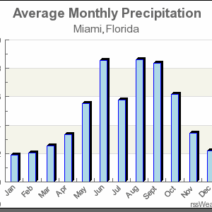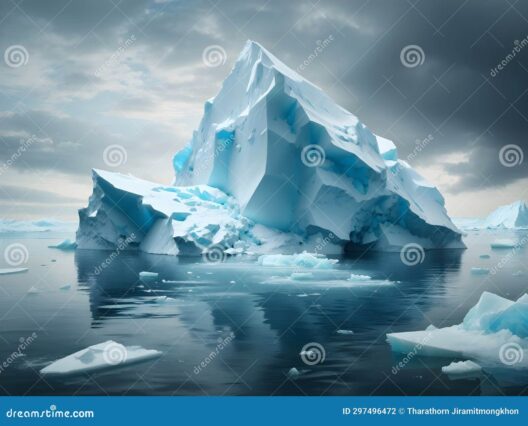Climate change has become an undeniable specter looming over the modern world. The intricate tapestry of climate patterns is undergoing a significant transformation, predominantly driven by global warming. This essay delves into the multifaceted impacts of climate patterns in flux, charting the ways in which warming is reshaping ecosystems, weather systems, and human societies across the globe.
At the core of this discussion lies the concept of global warming itself. Fundamentally, it refers to the long-term rise in Earth’s average surface temperature resulting from the increasing concentrations of greenhouse gases (GHGs) in the atmosphere. Carbon dioxide, methane, and nitrous oxide are the primary culprits, emanating from human activities such as fossil fuel combustion, deforestation, and industrial processes. As these gases accumulate, they enhance the greenhouse effect, trapping heat and leading to global temperature rises.
The immediate ramifications of rising temperatures are most palpable through alterations in weather patterns. Traditional weather phenomena are increasingly erratic. Take, for instance, precipitation patterns. Areas that were once reliably temperate are experiencing unprecedented shifts. Some regions are beset by intensified rainfall, leading to catastrophic flooding, while others suffer prolonged droughts. The intensification and frequency of these extreme weather events can be attributed to the destabilization of climate systems, a direct consequence of increased atmospheric temperatures.
Moreover, global warming manifests in the form of altered seasons. Spring appears earlier, summers lengthen, and winters become milder. This shift has profound implications for agriculture, disrupting the delicate balance farmers have cultivated over generations. Crops that thrived historically may falter under new conditions. Prolonged growing seasons may initially harbinge increased yields, but erratic weather introduces new challenges, such as pest infestations and unanticipated frosts, threatening food security on a global scale.
Equally significant are the repercussions on biodiversity. Species that rely on specific climatic conditions face existential threats. Habitats are shifting, leading to altered migration patterns and behaviors among wildlife. Take the iconic polar bear, for instance; it is becoming increasingly endangered as melting sea ice compromises its hunting grounds. Such species displacement disrupts ecosystems, tipping the delicate balance that sustains life. The extinction of one species catalyzes a ripple effect, leading to further losses within the food chain and disturbing vital ecological processes.
In addition to immediate environmental impact, global warming also affects oceanic systems. The world’s oceans absorb much of the excess heat and CO2, resulting in higher sea temperatures and ocean acidification. Warmer seas contribute to coral bleaching, an alarming phenomenon where coral reefs expel the algae that give them color and sustenance, leading to massive coral die-offs. These reefs, integral to marine biodiversity, provide habitats for countless species and serve as buffers against coastal erosion. The degradation of reefs signifies not just a loss of biodiversity but threatens local economies reliant on fishing and tourism.
This oceanic transformation also includes phenomena such as rising sea levels. The thermal expansion of seawater and the melting of ice sheets and glaciers contribute to this crisis. Coastal communities face an imminent threat as land erodes, and saltwater intrudes into freshwater resources. Millions are displaced annually due to rising tides, prompting challenges in urban planning and disaster response. The geopolitical implications of climate migration are profound, as populations seek refuge from inhospitable living conditions, potentially sparking conflicts over resources.
In addressing global warming’s global influence, it is vital to explore its socio-economic context. Vulnerable communities disproportionately suffer the brunt of climate impacts. Social inequities become exacerbated in the face of environmental crises, as marginalized populations often lack the resources necessary to adapt. Access to clean water, sustainable food sources, and healthcare becomes compromised, leading to vulnerability in the face of changing climates. This disparity highlights the necessity for climate justice—a movement advocating equitable solutions for those most affected by climate change.
Interestingly, global warming’s reach extends into the arena of public health. Changes in climate influence the spread of diseases, particularly those transmitted by insects, such as malaria and dengue fever. Warmer temperatures can extend the range of these vectors, introducing them into areas previously considered safe. Moreover, extreme weather can exacerbate respiratory issues, mental health disorders, and other health complications stemming from environmental stressors.
Combating these multifarious impacts calls for innovative and determined global responses. Strategies rooted in mitigation and adaptation are essential. Mitigation focuses on reducing GHG emissions, transitioning to renewable energy sources, and enhancing energy efficiency across all sectors. Adaptation, on the other hand, involves preparing for and adjusting to the consequences already set in motion by climate change. Urban areas must prioritize infrastructure resilience, ecosystem restoration, and community engagement to secure a sustainable future.
Furthermore, global cooperation is essential. Climate change knows no borders; mitigating its effects requires a unified effort across nations. International agreements, such as the Paris Agreement, aim to foster collaboration and commitment toward limiting global temperature rise. The transition toward a greener global economy necessitates the involvement of governments, industries, and individuals alike, emphasizing the notion that collective action can yield profound impact.
In conclusion, climate patterns in flux exemplify the complexities of global warming’s influence. From erratic weather and shifting seasons to biodiversity loss and socio-economic challenges, the repercussions are far-reaching. This intricate web of consequences necessitates an urgent and comprehensive response. Only through a concerted global effort can humanity hope to grapple with the myriad changes wrought by climate change, forging a path toward a sustainable future with resilience at its core.






